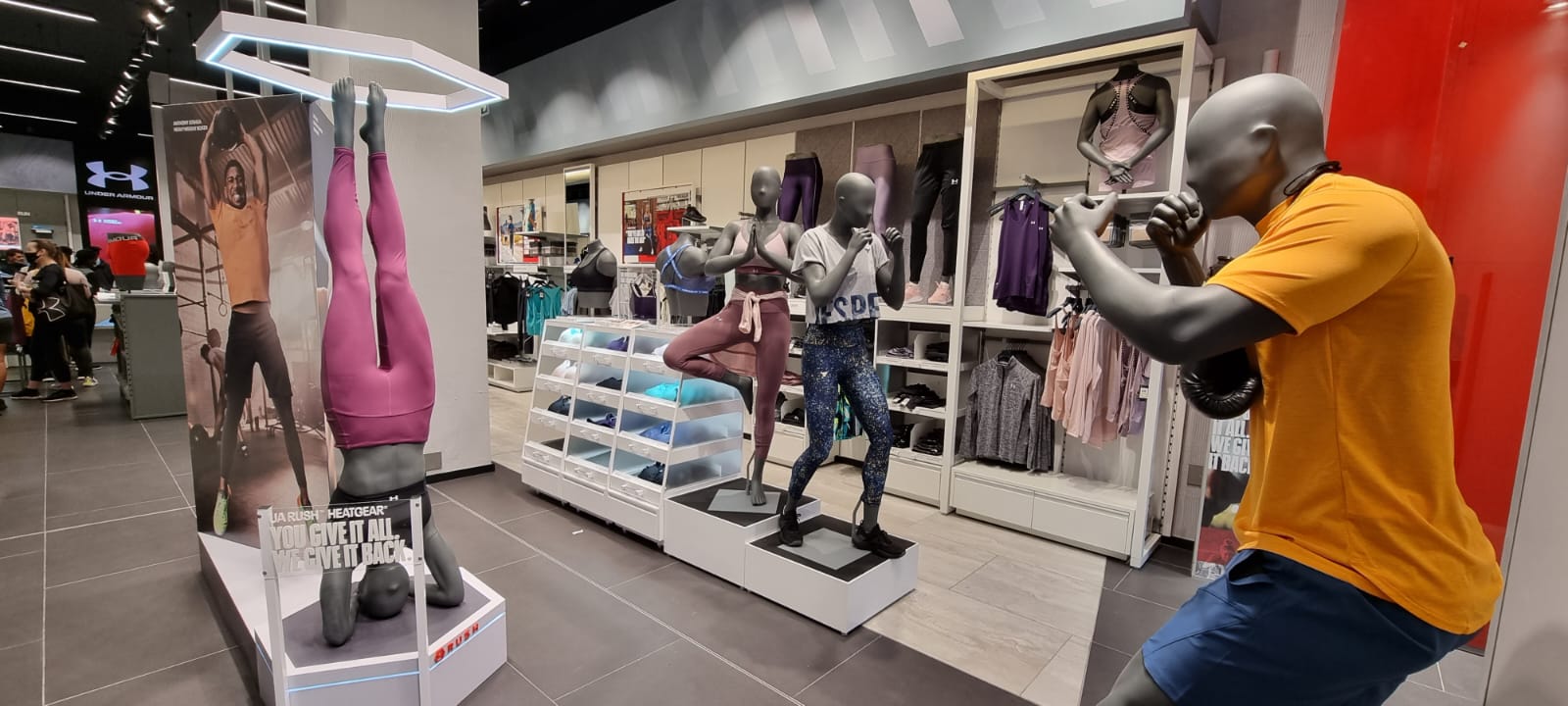Goldstuck on Gadgets
Under Armour goes cutting edge in-store
Fitness enthusiasts packed the opening of the first Under Armour concept store on the continent, at Mall of Africa, writes ARTHUR GOLDSTUCK
It’s one of the most cutting edge fitness brands in the world, but Under Armour stores in South Africa have never reflected its tech credentials. In the past week, that suddenly changed.
On Saturday, it launched its first Brand House City Concept store in South Africa, at the Mall of Africa, to showcase the connection between its store experience and its technology heritage.
“The brand is re-imagining retail by reducing friction, driving convenience and providing consumers with an engaging shopping experience that tells a story and provides athletes with performance solutions they never knew they needed but can’t imagine living without,” declared Apollo Brands, the sports and lifestyle company that owns local distribution rights for Under Armour (UA).
“With its strategic eye firmly on omnichannel experience and fulfilment, the new Mall of Africa store boasts a host of exciting digi-centric features with digital screens decked out throughout the store and RFID capabilities to elevate the shopping experience.”

In short, the store is beginning to sound like UA gear itself: the shoes use advanced technologies like smart chips built into soles that sync with apps on smartphones, while running shirts use a microfibre technology that pulls heat away from the skin. We have reviewed both categories of product in Gadget over the years, and will soon review the very latest offering from its shoe range.
Meanwhile, the new store was packed with athletes and fitness enthusiasts at its opening. It provided an opportunity to connect not only with the gear, but also with expert sales assistants who have answers to both gear and fitness questions at their fingertips.
This ties in with an in-depth UA analysis of its stores aimed at answering the question of whether it was effective in its purpose, “to make athletes better”. It found that the digitalisation of stores would help athletes make better purchase decisions by understanding the technology in UA products, and its benefits.
Brent Venter, UA South Africa head of retail, told Gadget that the shift was symbolised by a move from massive graphics and huge logos to a greater focus on the product, and the ability to experience them across various channels.
“There’s a lot more space, which allows us to display our product and allow the consumer to enjoy the product more. The massive graphics overwhelmed the product. In being a cutting edge, technical product, we want to be a bit more understated and provide a premium experience.”
That provides a context in which the technology, like Radio Frequency Identification (RFID), can be experienced in a more natural way. Not only will it allow products to be tapped on screens for more information, but also for accurate inventory management.
“We are already RFID-capable, and that will allow us in the near future to offer better omnichannel capability, which then provides our consumers the opportunity to click-and-collect or have it delivered. It also allows us to have a lot more engaging components in our store, like digital screens where people can shop off it. They can lift and learn, pick up a shoe and it tells you about the shoe, and then buy the product (via the screen).”
RFID will be used both for more efficient management of inventory and to give customers more confidence in shopping.
“When they see there’s one item left on the system, there is one left. The RFID tag can also talk to the digital screen in the store, which allows the consumer to move new products onto the screen and allow it to talk about the product. We will also start introducing smart boards at entrances. It’s an RFID driven technology that is a security feature, but its main purpose is stock accuracy.”
The omnichannel experience is next.
“We do find the consumer wants to be in the physical space to touch and feel the product; you need to try it on. But we are trying to find ways to merge it and allow the consumer to have the same experience whether in the store, whether in a wholesale environment, whether shopping online: to have the full experience of a brand and not just have small elements.”
Ultimately, the intention is not just to watch this space, but to feel this space.















